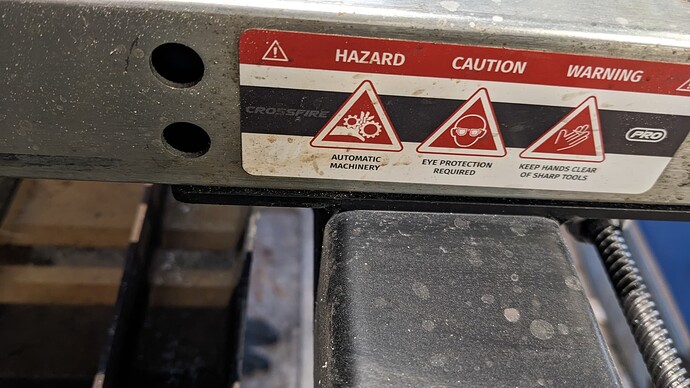Ok I am going to try and word this as best as I possibly can. I have read and re read the instructions. Squared and leveled and squared and leveled. Adjusted bearings over and over again. No matter what I do the y axis bearing carriages will not go perpendicular to one another. The bearings are set perfectly with no play up and down or side to side. The next step has you push the carriages up against the stanchion plates, and tells you what order to tighten them. They are both touching the sranchion plates and seem to be perpendicular to one another. So I moved to the next steps. Water table and tramming the z axis. Once this was finished I started pushing the carriage side to side and on the left side it is hitting the y axis carriage and stopping. It is clear that they are not perpendicular at this point because of the reveal showing from underneath the tube. So I go back and start re adjusting everything. No matter which way I spin it, either the x hits the y bracket. Or one y bracket sits way off the stanchion plates when pushed all the way over. If this has been touched on before in this group please tag me on the post . However I have not found anything. I can get pictures tomorrow when I get back to my shop. But hopefully I’ve worded everything correctly enough for someone to understand.
Its hard to understand, but I think I get what’s happening. The holes in the X axis rail have enough play in them to allow the rail to move forward and back. You need to loosen all 6 bolts and pull the X axis rail forward until the front of the rail is flush with the front edge of the Y axis weldment. If you center the rail on the weldment, the X carriage runs into the weldment. There was one other person that reported this problem and it took a lot to convince him that the solution was simply loosening those bolts and sliding the rail forward.
Except I’ve done that like 100 times and it doesn’t work. X axis carriage still hits the bracket for the tube to mount to.
When I pull the tube forward it makes it so one side touches the stanchion plate and the other side will not. (Yes I loosen both sides and pull them forward
I honestly think it may have something to do with the fact that the flanges for the bearing block on the weldment are slightly bent. And were from the box .
If you loosen all the bolts holding the x-axis tube to the weldments, pull both sides up against the stanchions you’re saying that you can’t align both sides such that the z assembly misses the y-axis weldments? If so then it sounds like your table isn’t perfectly square otherwise both y axis assemblies would meet the stanchions without having one side so far out on the weldment. When you say you’ve squared your table, how are you doing it? Are you using a carpenters square? To me that method just wasn’t accurate enough. I measured corner to corner and tried to get it within a 32nd of an inch.
Maybe, but I would think that adjusting the bearing blocks per the instructions would account for a small bend on the flanges.
Ok. If you loosen the 4 bolts that hold the bearing block assemblies on the front and back of the weldment, you can rotate the arm on the weldment to align it square to the rail. I’m referring to the steel plate that the bearing blocks are mounted on. Those plates have a lot of slop in the holes, to allow the Y carriage(weldment) to be aligned with the rail.
Don’t put too much faith in the stanchion mounting plates being perfectly aligned with each other. The bolt holes in those have some play and they can be out of alignment with each other.
I was able to alleviate the issue by loosening everything back up all the way back to the 16 bearing block bolts. Push the tube all the way forward. Tighten one bolt on each end . And then adjust my bearings and tighten everything down from there.
